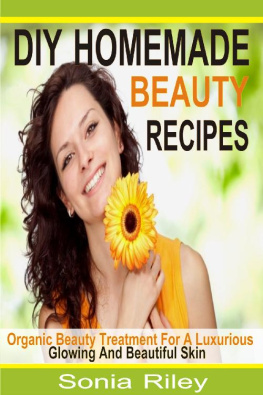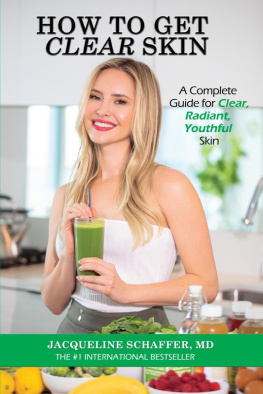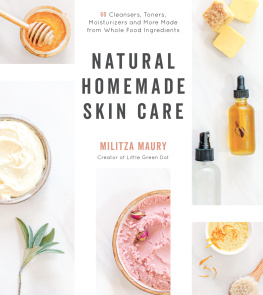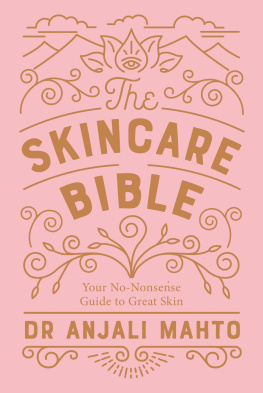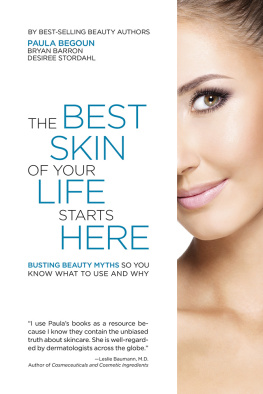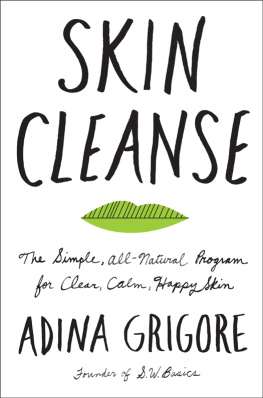Contents
Guide

The Scandinavian Skincare Bible
Johanna Gillbro, PhD, is an award-winning skin scientist with
more than fifteen years of experience in experimental dermatology,
clinical research, and skincare product development, as well as
substantial experience within the pharmaceutical industry. Gillbro
is frequently engaged as a speaker at international dermatological
and cosmetic science conferences to present her cutting-edge
research, and for the past decade has been the most cited
author in the International Journal of Cosmetic Science.
Fiona Graham has a degree in Modern Languages from Oxford
University, and has lived in Kenya, Germany, the Netherlands,
Luxembourg, Nicaragua, and Belgium. She translates from
Spanish, French, Dutch, Swedish, and German, and is currently
the reviews editor at the Swedish Book Review.



Scribe Publications
1820 Edward St, Brunswick, Victoria 3056, Australia
2 John St, Clerkenwell, London, WC1N 2ES, United Kingdom
3754 Pleasant Ave, Suite 100, Minneapolis, Minnesota 55409, USA
Published by Scribe in 2020
Published by agreement with Ahlander Agency
First published in Swedish by Bookmark Frlag as Hudbibeln in 2019
Copyright Johanna Gillbro 2019
Translation copyright Fiona Graham 2020
All rights reserved. Without limiting the rights under copyright reserved above,
no part of this publication may be reproduced, stored in or introduced into
a retrieval system, or transmitted, in any form or by any means (electronic,
mechanical, photocopying, recording or otherwise) without the prior written
permission of the publishers of this book.
The moral rights of the author have been asserted.
The advice provided in this book has been carefully considered and checked
by the author. It should not, however, be regarded as a substitute for
individual medical advice. The author, their representatives, and the publisher
shall not bear any liability whatsoever for personal injury, property damage,
and financial losses.
Text design: Johan Barrett & Scribe
Photographs on pages : Anders Kylberg/
Acne, Stylist: Emilie Florin/Acne
Photograph of the author, page 5: Annika Berglund
Watercolours on pages : Ina Schuppe Koistinen
Illustrations: Olof Bandh
Images on pages : Shutterstock
Photographs on pages ,
: Pexels
Photographs on pages : Unsplash
Photograph on page : Wikipedia
Photographs on pages : Author's own
Photographs on pages : Stocksy
Images on cover: J.D.S./Shutterstock
Scribe Publications is committed to the sustainable use of natural resources
and the use of paper products made responsibly from those resources.
9781925938562 (Australian edition)
9781912854943 (UK edition)
9781950354351 (US edition)
Catalogue records for this book are available from the National Library
of Australia and the British Library.
scribepublications.com.au
scribepublications.co.uk
scribepublications.com

Contents



Foreword
We get goosebumps if someone strokes our skin gently. The reason for this is
that a tiny hair-erector muscle the arrector pili, located deep in each hair
follicle responds to nerve signals from the brain. Our hairs stand on end,
and the layer of air they trap protects us against the cold.
The skin, our bodys outer shell, is a fascinating organ that embodies
memories from its evolutionary development. Yet given that its our largest
organ, with a surface area of two square metres, we know surprisingly little
about it either about its structure, or about how best to take care of it.
We know that oily fish are good for the brain, that olive oil is good for the
heart, and that the calcium in yoghurt strengthens the skeleton.
But what about our skin?
This book takes a fresh look at the skin from a holistic perspective.
What can the latest research tell us about our skin? Whats your own
personal skin type, and what is its current status? What can you do to
make your skin healthier? And what role do the skins micro-organisms
play? How can nutrition and lifestyle affect skin health?
Science is advancing all the time, and right now major discoveries are
being made about the skins own microbiome: its bacterial flora, comprising
hundreds of millions of micro-organisms that work together with skin cells
and which, we now know, play a decisive role in our health.
At the same time, we expose our skin to too many antibacterial substances
in our daily skincare products. Currently, scientific congresses worldwide are
discussing how cosmetics and skincare affect our skins microbiome, which
is comparable to the gut microbiome, long known to be vulnerable to the
effects of preservatives and processed food.

Theres a plethora
of products but often
no research to show
they do what it says on
the tin. Shouldnt we hit
the reset button?

To say that I find skin fascinating would be an understatement. My personal
interest began in my childhood, when I had vitiligo, a disorder affecting the
skins pigmentation, resulting in patches or spots of lighter skin. I wasnt at
all bothered by this as a child. I felt I was unique, and I was happy to identify
with my favourite breed of dogs, dalmatians. I was proud of my patchy skin.
But things got worse in my teenage years. The desire to be the same as everyone
else replaced the desire to be unique.
Our skin affects our self-image. Some variations in our skins appearance




